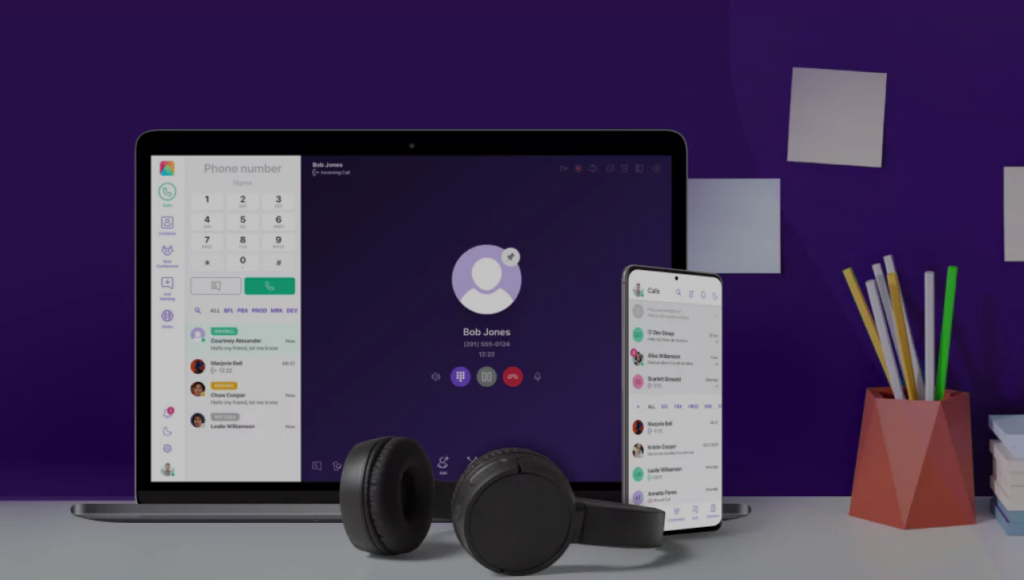It’s become apparent that the traditional on-premises workplace we know isn’t cutting it anymore.
Between the lockdowns to reimagined workplace policies, most companies are opening up to the idea of long-term remote and hybrid work. And thanks to accelerated digital transformations and technological advancements, the work from anywhere movement is in full steam and more accepted than ever before, with 62% of employees working from home at least occasionally.
Almost overnight, we’ve seen the rise of the hybrid workplace.
Online communication has revolutionized the way we live and work, there’s no denying that. Getting in contact with your friends overseas or your boss away from the office is now instant and ubiquitous, so it’s no wonder why these technologies proved so invaluable when most of us were stuck inside for so long.
To that end, hybrid and remote work has risen up as new alternatives to the traditional in-office approach. How do these new models work? And what does the future of work look like?
Defining the Hybrid and Remote Workspaces
A hybrid model involves having some employees work on-premises while others work remotely. The research and development department might have to stay within the office to do their jobs properly, but perhaps marketing can afford to stay away without compromising on productivity.
A remote model is purely away from the physical office. Employees use digital communication tools to stay in touch no matter where they are, whether it’s their own living rooms or the coffee shop. Technology has progressed to the point that entire businesses are starting up without a physical location, as they work with an entirely remote model.
Why Work Remote At All?
Hybrid and remote both require some form of work that occurs outside of the office. Why would you even be interested in such an arrangement?
Under any sort of remote model, employees have the flexibility to do work wherever they need to, as long as they have a device with a proper Internet connection. There’s also no need to invest in traveling, gas money, or parking spaces when you don’t have to visit the office.
At the same time, many workers feel that they are disconnected from the team when they aren’t physically meeting up. And, of course, some jobs simply cannot be done remotely, such as warehousing.
Despite these caveats, experts have predicted that 73% of all departments will involve remote work by 2028, indicating not only the growing popularity of the work model but also its applicability to a wide variety of industries.
The Differences Between Hybrid and Remote
How do you decide between the two models? The following are the essential differences between companies that adopt one over the other.
- Communication: Under a hybrid system, you have two sets of workers: those at home and those on-site. The result is two separate groups to accommodate your communications. A fully remote setup allows you to unify this communication across everybody.
- Flexibility: While both options offer improved flexibility over the traditional method, a hybrid model allows employees to choose whether to stay home or visit the company, allowing them to tailor the experience depending on the nature of the work. A fully remote setup might have employees working too far apart for this benefit to be possible.
- Separation: Tying into the communication point above, the group of employees working at home might feel left out or disconnected from those working in the office. This issue is technically resolved under a fully remote office.
“You can extrapolate from these differences whichever system you prefer for your organization.
In both cases, however, most industries do consider either option superior to a traditional approach where everyone is tied to the office all the time.”
Why You Should Choose Hybrid Work
A hybrid option gives you more flexibility, which results in better productivity as workers can choose what works best for them. You might prefer to choose your own hours remotely, or you might think that being surrounded by team members helps you more. Either way, the choice is yours.
A hybrid system also reduces operational costs over traditional work. When not as many employees are in the office, you have fewer parking spots to fill and fewer needs for office space.
68% of employees themselves even say that they prefer a hybrid model, as it combines the benefits of both in-house and remote labor.
… And Why You Might Not
The obvious downside to working from home is the lack of direct interaction with your coworkers. Not everyone will be willing to give up those group lunches and events, but a hybrid workforce allows some flexibility for certain employees to choose whether or not to go remote.
Another potential problem is the desynchronization between the remote team and the on-site team. A remote group might be located in another time zone even, and having to coordinate schedules with your on-site squad can prove a challenge. It’s all manageable, however, with the right organizational tools and practices.
Why You Should Choose Remote Work
“Geographic restrictions are nonexistent when you go remote. Employees can be hired from almost anywhere, meaning that your business has access to a massive talent pool worldwide.”
The reduced reliance on vehicular travel means a more positive impact on the environment. Telecommuting itself is responsible for cutting down on emissions from an estimated 600,000 cars.
Additionally, many employees actually prefer going remote and taking control of their own workdays. A staggering result from Buffer’s State of Remote Work Report shows that almost all employees today are interested in going remote for the remainder of their careers if possible, citing reasons like better work-life balance, fewer distractions, and more flexible living. You might see higher employee satisfaction and retention as a result.
Of course, we can’t skip over the elephant in the room: a remote employee is a safe employee. A remote business is impervious to health risks and lockdowns.
… And Why You Might Not
Going fully remote is still an unorthodox business model, and some of the problems you might encounter are:
- Distanced communication. Collaboration tools and software definitely improve the experience for remote workers today, but it’s not exactly the same as having an employee right in the office. Supervisors, for instance, probably prefer the option to check in with employees physically.
- Complicated bookkeeping. Managers will have to work with various foreign legal currencies and regulations regarding employee reimbursement, as remote workers can come from almost anywhere.
- Incompatibility with some roles in the company. For instance, warehousing workers and those operating specialized machinery and equipment will have to stay on the premises.
The decision of whether to go hybrid or remote depends on the context of your business. Does the workflow allow for employees to be online? How will it impact your current policies and procedures?
Best Practices For Adopting Hybrid or Remote Work
Such a significant change to the work culture may result in some teething issues at first, but you can ensure a smooth switch through a few tools and best practices.
- Establish policies for remote work. Include how employees can set up their own home offices, track work hours, solve technical problems, and facilitate communication for meetings. Assistance in setting up a home office is one of the top-ranked priorities remote employees ask for.
- Organize collaboration channels to accommodate workers in different time zones. Prepare to use an asynchronous communication line where no one is expected to respond immediately.
- Use the tools you have at your disposal. Communication apps and programs are everywhere now and run on a variety of devices. Team leaders now have the option of conducting meetings over video conferencing solutions and other helpful tools.
This last recommendation is a turning point for the companies pursuing remote options. Adopting a feature-rich white label softphone solution like Acrobits Softphone is one of the best ways to hit the ground running, as they have all the digital infrastructure set up already for streamlined collaboration despite the physical distance.
Whether you’re planning on a hybrid deployment or going all-in on remote work, most businesses will find an overall benefit in making the switch.
Offering work-from-home options will not only improve business agility but will also make you a more attractive employer to talented applicants.
There are now business software tools and services that specifically help remote workers integrate with their employers to make the transition even easier.
Find out why major businesses like FreeSwitch, BroadSoft, and Kamailio trust the industry-leading Cloud Softphone platform to become hybrid work-ready.


![What is a CPaaS? In-Depth 101 Guide [10 Major Benefits]](https://acrobits.net/wp-content/uploads/Acrobits-Is-Joining-Intelliquent-Family-1024x580.png)



